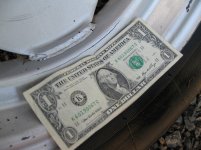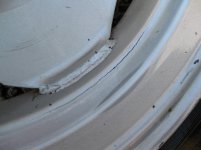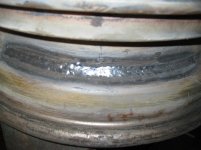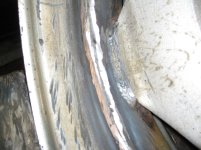Steel wheels are welded into a hoop (like a short tube) and then roll formed. Our company had some dealings with a vendor in Northern Indiana who makes the machines that do the roll forming.
You can see that the steel is rolled into a really tight radius at the point that it cracked. Now this might sound crazy, but if a batch of steel comes in that is "better" than regular mild steel (slightly elevated carbon or a few trace alloys) the improved yield strength and reduced ductility may cause a lot of residual stress to be set up in that severe forming operation.
For however long the tractor has been around, that stressed area has been subject to cyclic loading and it is possible that there might be a little corrosion on the inside, all of which contributes to heighten the stress concentration until it finally cracks.
Is this a 4 spoke wheel ? It could be that shrinkage of the wheel center after welding also puts this area in direct tension. For this reason, most alloy wheels are designed with odd numbers of spokes or with the spokes curved, to reduce stress buildup caused by the casting cooling down and shrinking.
Anyway, it seems you have it well under control...





